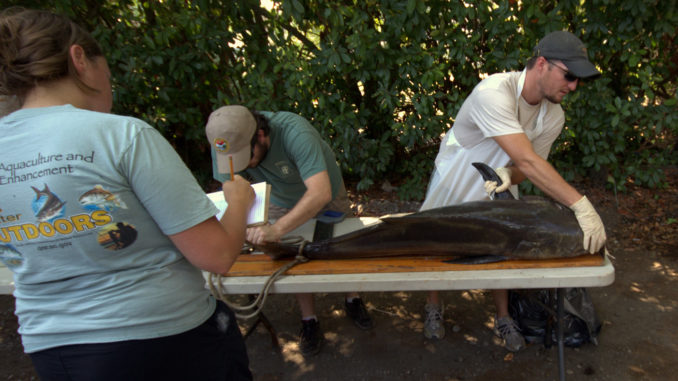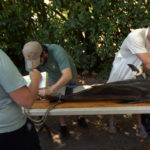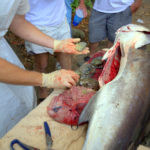
Donate carcasses to SCDNR for research
Inshore, offshore, on top in plain sight or down deep, fighting hard and commonly over 50 pounds, cobia are one of the most-popular gamefish in South Carolina waters. The annual migration that lasts from mid-April until early July is anticipated by more and more anglers each year.
With increased pressure comes concerns about the sustainability of the resource and future prospects for anglers. Thankfully, our own S.C. Department of Natural Resources is working hard to insure that fishing for cobia continues to be just as good, if not better, in the future as it is now. But SCDNR cannot do it alone, and a large part of its research depends on help from recreational anglers.
“Anyone who catches cobia can get involved,” said Justin Yost, an SCDNR biologist.
Helping out is reasonably easy; instead of discarding carcasses in the trash or elsewhere, discard them at one of the two freezer-program collection sites: Boat House, 397 Squire Pope Rd. in Hilton Head or Waddell Mariculture Center, 211 Sawmill Creek Rd. in Bluffton. Folks in the Charleston area who wish to donate a carcass can schedule delivery to the Marine Resources Research Institute on St. Johns Rd. or arrange a pickup. Not only will the SCDNR appreciate you donating your cobia carcass, your garbage man will really be grateful.
Few people realize how hard SCDNR staff membbers work and the dedication it takes to get the job done. One shining example is the work they do each year at cobia tournaments. Instead of waiting for donations, Yost and other biologists collect samples after weigh-ins; this is where most of their research takes place.
Since 2007, SCDNR has collected otoliths (ear bones), gonads, DNA, stomach contents, length and width measurements from every individual cobia provided. The otolith is used to determine age, gonads are used to assess reproduction stage and estimate reproductive rate, and genetic DNA samples provide information on population structure and hatchery contribution.
“The 2012 collections were not as good as we would have liked them to be, due in part to weak tournament turnout due to weather, too few other donations, etc.,” Yost said. “We are hoping for much better results in 2013.”
In 2012, the South Atlantic Fisheries Marine Council (SAFMC) conducted a federal stock assessment on cobia, covering waters from the Gulf of Mexico and up the South Atlantic coast. The research done by SCDNR made up about half of the data used in the survey, which is a staggering amount considering the size of the region involved.
One of the most important discoveries made was that the cobia population is still healthy, but on a slight decline in recent years. Data gathered by the SCDNR is extremely important so that sound decisions are made in the future that benefit both the angler and the resource.
“This research was possible because of the help and support of the local community, from weekend warriors to the professional anglers who make their living on the water, the community has invested their time and efforts toward helping improve our understanding of this important species,” Yost said.
Off all the work that SCDNR does on cobia, nothing has a greater impact on population than the restocking program. Efforts started in 2001 at the Waddell Mariculture Center in Bluffton with a federal grant to refine spawning and juvenile rearing techniques for commercial production of cobia.
In June 2012, slightly more than 4,000 juvenile cobia were released in South Carolina waters. That that release pales in comparison to the 2007 release of 50,000 juvenile cobia in Port Royal Sound. Last year, fish from the 2007 release made up approximately 50 percent of cobia caught, a staggering number that shows just how much of a positive impact restocking can have and how important it can be for the future of the fishery.
Why are recent stockings small compared to 2007? The answer is funding. Government agencies across the country have less to work with than in years past.
“We are diligently working on finding new sources of funding for cobia,” Yost said.
If the SCDNR doesn’t let funding issues stop them from getting the job done, the least anglers can do is make the small effort of donating their cobia carcasses instead of just throwing them away.
For information about donating cobia carcasses, contact SCDNR’s Yost at 843-953-2011.





Be the first to comment